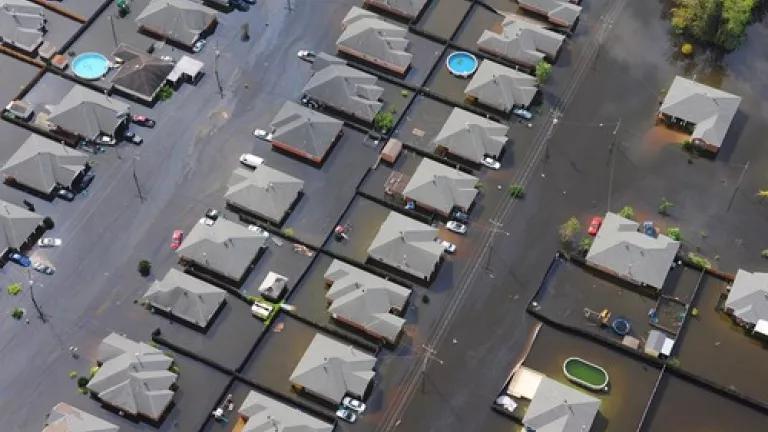
The anniversaries keep rolling around - Katrina, and now Sandy. In the meantime, megastorm Patricia in Mexico and Hurricane Joaquin - with its accompanying 1,000-year floods in South Carolina -- reminded us that another apocalyptic storm could devastate American communities this time of year.
Katrina was in 2005, Superstorm Sandy in 2012 and the so-called "Biblical floods" in Colorado and harsh floods in Texas were in late summer 2013. Now, we can add 2015 to the list and that doesn't include the mini water-related disasters with every hard rain in virtually every city. Those aren't in the headlines because we've come to accept them, even when they kill.
More and more of us are experiencing the impacts of climate change first-hand, but there are things we can do -- from making our water infrastructure better prepared for these risks to climate-smart reforms to the National Flood Insurance Program that would encourage people to migrate away from vulnerable areas over the next several decades.
And, it's not just our coastlines that are vulnerable. Our water infrastructure is aging and out of date and it puts people and communities across the country at risk.
We take it for granted that our water is safe to drink and our oceans, bays, rivers and streams support our needs for fresh water, food sources and recreation. But sometimes these invaluable resources become toxic and dangerous due to neglect and wasteful policies, and the effects cost lives and billions of dollars.
The horrible losses from so-called superstorms are bad enough, but even our most mundane and everyday water policies can be harmful when weather events hit and storm water runoff pushes contaminated water and untreated sewage into waterways.
NRDC's Alisa Valderrama and Rob Moore recently sat down with Jeff Wood of the Overhead Wire to talk about these effects and the ways we can harness healthy water and dispose of pollutants. Listen to their conversation (click below) to find out more about how storms pose increasing threats, and what can be done about keeping our water and communities safer.

